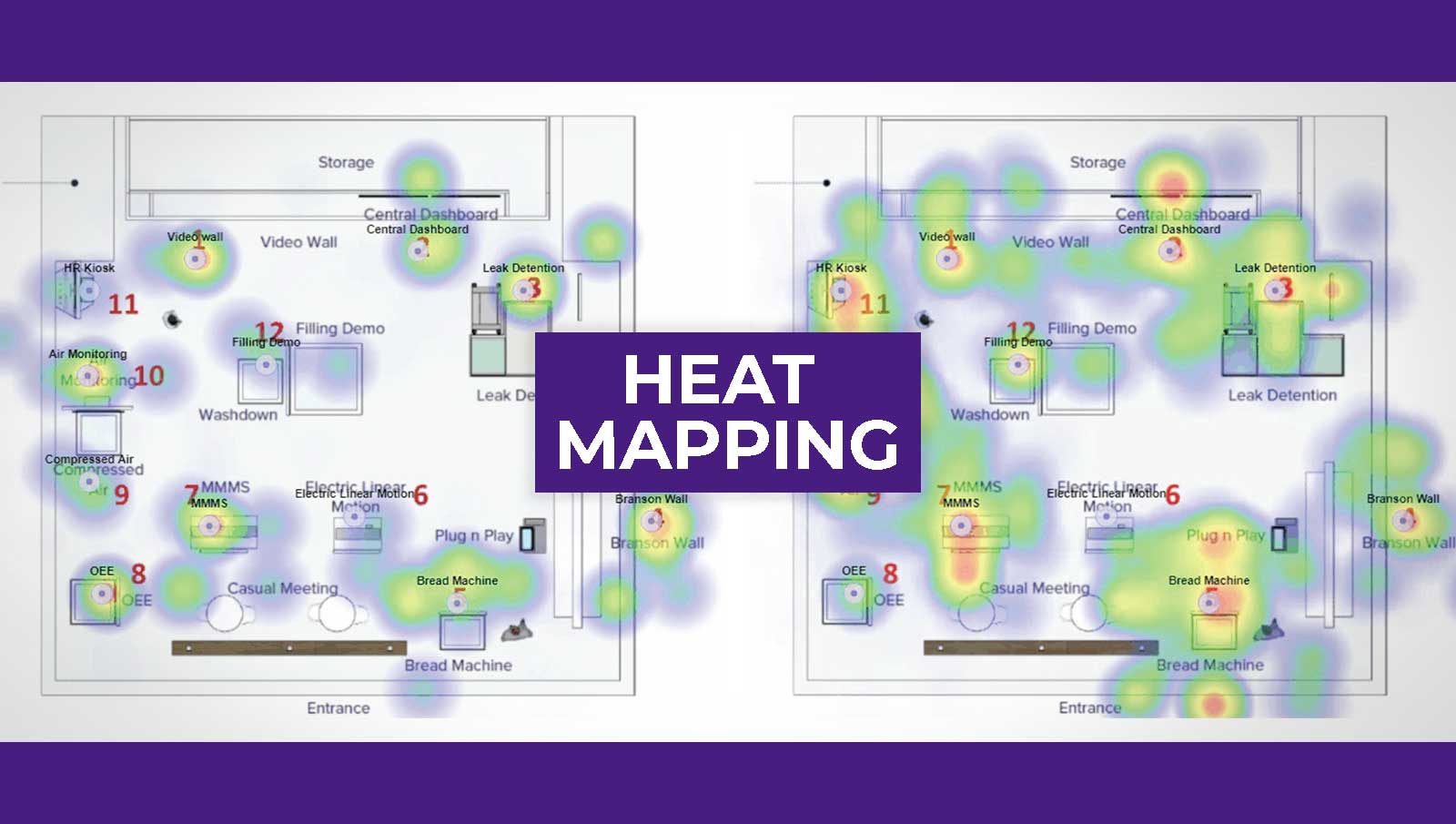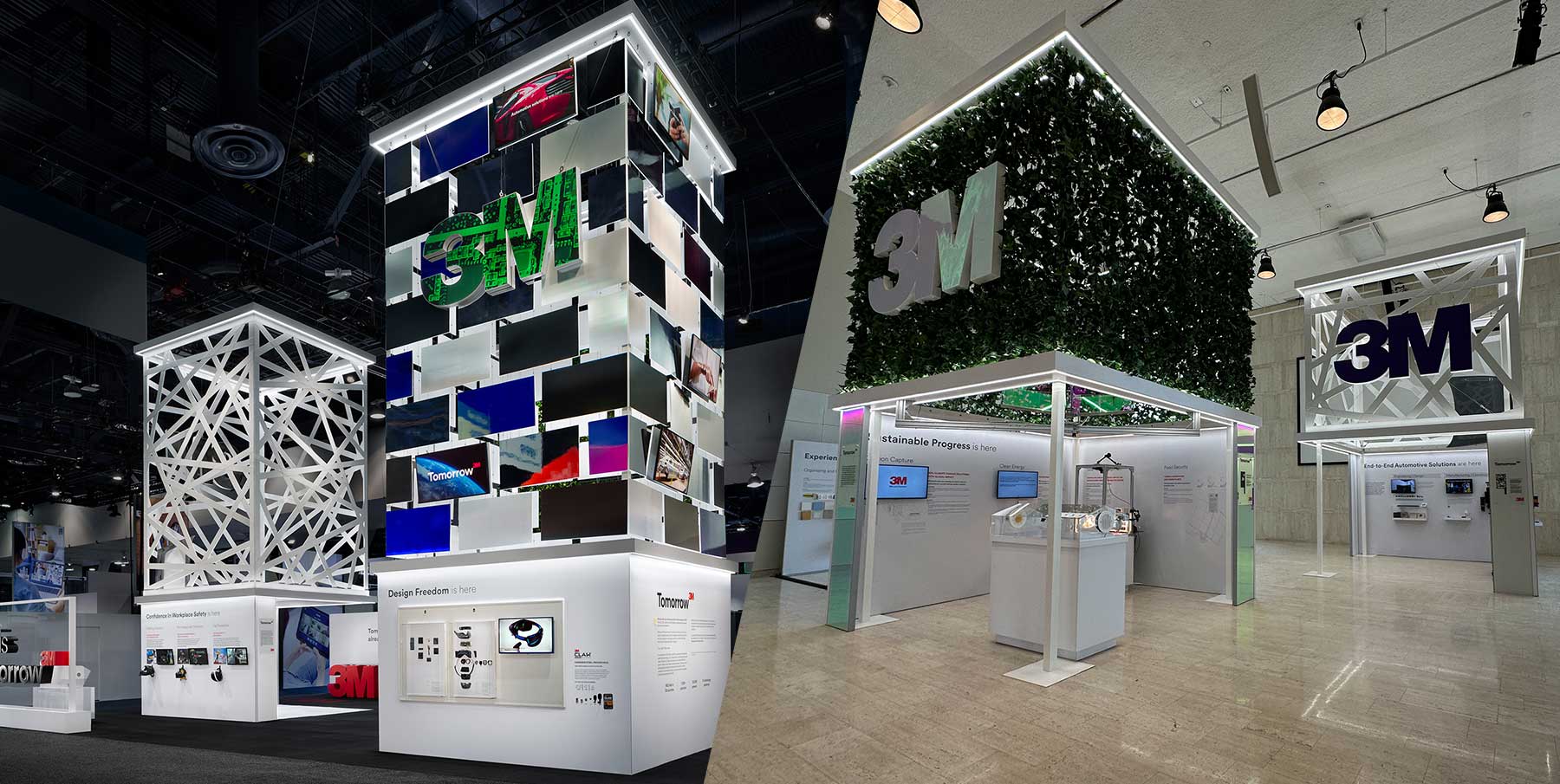Trade shows are a cornerstone of many brands’ marketing efforts, which is why measuring the return on investment (ROI) is vital. In a previous blog post, we explored the diverse KPIs that capture the full value of your investment. While identifying these metrics is crucial, many marketers still face a common challenge: how to accurately measure and track them.
New technologies are changing the game, transforming what was once a guessing game into a science of precise measurement. From real-time foot traffic analysis to integrated lead scoring, innovative solutions are helping marketers capture deeper insights and ensure every marketing dollar is well spent. In this post, we’ll dive into some cutting-edge technologies reshaping trade show ROI measurement.
1. Tracking trade show booth engagement in real-time.
Understanding trade show performance used to happen only during post-mortems. Now, technology has made it possible to get real-time insights into booth engagement. Tools like smart badges and beacons allow marketers to track how long attendees spend at a booth, which parts of the booth they interact with, and which experiences capture the most attention. Sensors throughout the booths can also do the same, helping to understand which aspects of an exhibit and larger show program are resonating with target prospects. Real-time tracking gives brands a clearer picture of what works and allows them to make adjustments on the fly.
2. Heat mapping and foot traffic analysis.
What if you could tell not just whether people visited your booth, but what captured their interests while they were onsite? Heat mapping technology helps brands understand the flow of attendees through their exhibit. By visualizing foot traffic patterns, you can determine which areas attracted the most interest and adjust booth layouts accordingly for future events. This data can help optimize booth design to enhance engagement and improve ROI. Often, it provides ideas for exhibits and features that should be carried through to other shows and dead space that could be used in other ways.
3. Sentiment analysis from social media.
Raising brand awareness and fostering a positive reputation is one of the goals of investing in trade shows. Other than looking at post-show buys and media coverage, tracking this information could be difficult. Social media is an invaluable tool for gauging attendee sentiment. By using sentiment analysis tools, brands can monitor mentions of their exhibit or product and get a sense of how attendees are reacting to their presence at the show. Positive sentiment is an indicator of success, while negative sentiment provides an opportunity for improvement. With the advent of sensors and AI, it’s even possible to measure the sentiment of attendees in real-time to see whether your booth is building your brand.
4. Measuring event lead quality with CRM integration.
Getting leads is often a top objective of attending trade shows, but it’s the quality of those leads that matters most. Integrating booth engagement tools with customer relationship management (CRM) systems is another way technology is boosting trade show ROI measurement. By tracking which leads engaged with what aspects of the exhibit, companies can assess lead quality and determine which prospects are the most promising. CRM integration helps nurture high-quality leads more effectively and ensures that sales teams focus their efforts on the right opportunities. It can also inform post-show follow up and make it easier to segment show leads on different quality factors such as warmth, likeliness to buy, and even profitability metrics.
5. Virtual and augmented reality metrics.
Unforgettable experiences can be hard to deliver in a small space, but new technologies are expanding your brand’s playing field. Experiential technology like virtual reality (VR) and augmented reality (AR) is increasingly being used in exhibits, but it’s also important to measure their impact. VR and AR experiences can be tracked by analyzing engagement data—such as time spent in the experience and interactions made. These metrics help determine if these innovative elements are contributing to attendee engagement and ROI. With data, you can understand whether tools like a movie that shares your brand story, an interactive product display, or a narrative driven customer experience moves the needle in a tangible way.
6. Post-event surveys and data analysis.
It’s also important to hear from customers themselves. While technology can gather data in real-time, post-event surveys remain a valuable tool for gathering qualitative insights. Surveys help gauge overall attendee satisfaction, understand what resonated most, and identify areas for improvement. When combined with data from tracking tools, surveys provide a holistic picture of the exhibit’s effectiveness and ROI. With QR codes, you can conduct real-time surveys as well as sending follow-up questionnaires.
7. Data dashboards for easy ROI visualization.
Data can also help you plan, but it’s important to get the right perspective to drive insights. Having the right tools in place to visualize data is key for understanding ROI. Data dashboards compile all of the relevant metrics in one place—from booth engagement to social media sentiment to lead quality—allowing brands to see, at a glance, how well they performed. These dashboards make it easier for marketing teams to communicate results to stakeholders and justify the investment.
Getting started with trade show optimization technologies.
Measuring trade show ROI has always been a complex task, but new technology is making it easier than ever. By using advanced tracking tools, CRM integrations, and data visualization dashboards, brands can get a comprehensive understanding of how their trade show investments are paying off. These technological innovations not only make ROI measurement more accurate but also provide actionable insights that help brands optimize future efforts. As trade shows continue to be an important part of marketing strategies, the role of technology in ensuring success will only grow.
Do you want to learn more about how technology could inform your trade show analytics program? Contact us today to speak to a trade show technology expert.






